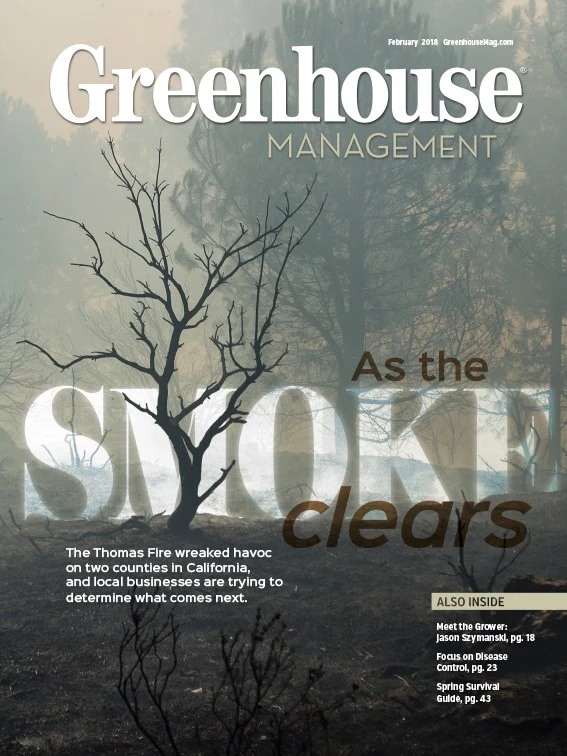When you consider that less than five percent of the light that reaches the plant is used for photosynthesis, you could conclude that light transmission is important. With many covering materials to choose from, how do you make the right choice? This column will look at light transmission of the most common materials and the amount of light reaching the leaf surface.
A rule of thumb used by researchers is that one percent increase in light equates to one percent increase in plant growth. This is true for fall, winter and spring operation, especially on cloudy days, but in summer there is usually adequate sunlight to keep levels above the saturation point.

Transmittance of light through glazing is measured and reported by all manufacturers. It is measured in the photosynthetic active radiation (PAR) portion of the solar spectrum (400 - 700 nm). It is the ratio of the radiation beneath the material to that above in the same waveband. It is done by standard test procedures as developed by the American Society of Testing Materials (ASTM) and is done in a labratory with light perpendicular to the glazing.

From the data in Table 1, there is not much difference between the single thickness materials currently available to the industry with most transmitting about 90 percent of available light. There is an additional loss of 10 to 15 percent by installing a double layer or selecting double or triple wall materials.
Why is it then that measured light at the leaf surface is only 40 to 60 percent of what is outside? This is where improvements in design, construction and maintenance are important.
Design considerations
- Orientation: The suns rays continually move during the day. An east-west ridge orientation generally provides more light but can create fixed shadows in gutter-connected houses. North-south orientation provides more uniform radiation distribution at the floor when integrated throughout the day.
- Width of glazing panels: Wider glass panes or structured sheet panels reduce the number of glazing support bars and shading.
- Greenhouse or bay width: Less wall and post members increase light.
- Wall height: Besides providing greater temperature buffering, taller houses reduce dark shadows from framing.
- Cooling system: Fans, shutters, evaporative pads and insect screens on endwalls create shade. Consider using motorized vents and fog cooling.

Construction considerations
- Frame and benches: Painted white they reflect more light to the plants.
- Plant supports: Hanging basket support pipe and conveyors create significant shading.
- Heating system: Root zone heat and wall pipe radiation can often be used to substitute for some overhead radiation and unit heaters increasing light levels.
- Energy/shade screeen: Select those that have the smallest storage footprint. Use clear screen material for winter daytime use to save energy.
- Water and electric utilities: These can often be placed along the walls or post lines under the gutter to lessen shade.
- Lighting fixtures: If there is adequate height, consider using fewer numbers of larger wattage fixtures.
Maintenance considerations
- Glazing selection: Choose a material that has a long life with slow rate of degredation.
- Clean glazing: Wash in the fall to remove exterior shading, dirt and smog. This can increase light transmission by five percent or more.
Although the light transmission of the glazing is an important consideration when building a new greenhouse, there are many other factors that need to be considered that can have a greater effect.

Explore the February 2018 Issue
Check out more from this issue and find your next story to read.
Latest from Greenhouse Management
- Anthura acquires Bromelia assets from Corn. Bak in Netherlands
- Top 10 stories for National Poinsettia Day
- Langendoen Mechanical hosts open house to showcase new greenhouse build
- Conor Foy joins EHR's national sales team
- Pantone announces its 2026 Color of the Year
- Syngenta granted federal registration for Trefinti nematicide/fungicide in ornamental market
- A legacy of influence
- HILA 2025 video highlights: John Gaydos of Proven Winners





